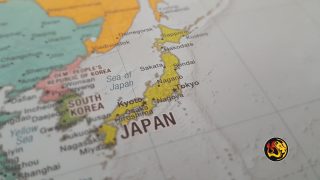
by Worthy News Washington D.C. Bureau Staff
(Worthy News) – The timeline for dismantling Japan’s crippled Fukushima Daiichi nuclear power plant has suffered a major setback, as the Tokyo Electric Power Company Holdings (TEPCO) announced Tuesday that full-scale removal of melted nuclear fuel debris will be delayed until at least 2037—several years later than initially planned.
TEPCO, operator of the tsunami-wrecked facility, now estimates it will require 12 to 15 years of preparation before starting the debris retrieval at Reactor No. 3. The delay stems from the complexity of reducing radiation levels, building infrastructure around the site, and developing effective methods to handle and store the highly radioactive material.
The Fukushima plant was devastated by a 9.0-magnitude earthquake and subsequent tsunami in 2011, which caused core meltdowns in three reactors. Experts estimate that approximately 880 tons of melted nuclear fuel—mixed with internal structural debris—remain trapped inside the damaged reactor units.
This latest delay pushes back progress toward the 2051 target jointly set by TEPCO and the Japanese government for complete decommissioning of the facility. While TEPCO officials maintain their commitment to the timeline, skepticism is growing among experts who say the challenges may stretch cleanup efforts well into the next century.
“Realistically, we are aware of the difficulty to achieve the target, but we will not drop the goal just yet,” said Akira Ono, TEPCO’s chief decommissioning officer. “We still don’t have a clear work schedule after the full-scale removal begins.”
The Nuclear Damage Compensation and Decommissioning Facilitation Corp., the government’s supervising body, echoed the gravity of the situation. Its chairman, Toyoshi Fuketa, acknowledged the enormity of the task ahead, stating that “the difficulty of retrieving the first handful of debris has become apparent.”
So far, only small test retrievals have been conducted, including one last November—three years behind schedule—which yielded minuscule samples from Reactor No. 2. Full-scale operations, originally targeted for the early 2030s, have now been shifted to fiscal 2037 or later.
In anticipation of the fuel debris removal, TEPCO is weighing two proposals: demolishing a radioactive waste building adjacent to Reactor No. 3, or attempting to proceed with the building intact. Both options present logistical and safety challenges, and regulators have requested further studies before any final decisions are made.
While the government and TEPCO continue to assert that the 2051 decommissioning goal remains unchanged, internal assessments and ongoing technical uncertainties suggest the path ahead remains fraught with obstacles. As preparations continue, the Fukushima disaster remains a sobering reminder of nuclear energy’s risks—and the immense difficulty of cleaning up after catastrophe.
Copyright 1999-2025 Worthy News. This article was originally published on Worthy News and was reproduced with permission.
Latest News from Worthy News
After hours of tense negotiations, European Union leaders agreed to provide Ukraine with a 90 billion euro loan (about $100 billion) to meet the wartorn nation’s urgent financial needs. However, they failed to reach a consensus on whether the loan should be secured using Russia’s frozen assets held in Europe.
Several people were detained for trying to interrupt a pro-Israel demonstration at Dam Square in Amsterdam attended by around 2,000 people, police and organizers said.
Five Iranian Christians have been sentenced to a combined 55 years in prison amid a broader crackdown on devout Christian believers in Iran, a strict Islamic nation, sources told Worthy News Thursday.
Egyptian Christians facing religious-based violence and discrimination are increasingly relying on underground safe houses as authorities continue to fall short on protecting minority rights, Christian advocates say.
Secretary of War Pete Hegseth announced plans Tuesday to overhaul the U.S. military’s Chaplain Corps, arguing the institution has drifted from its original mission and lost the “faith and virtue” that defined it when it was established under George Washington more than 250 years ago.
The United States has approved $11.1 billion in new arms-sales packages for Taiwan, signaling continued security support for the island even as President Donald Trump’s administration emphasizes trade and economic engagement with China, The Wall Street Journal reported.
The U.S. House of Representatives passed legislation late Wednesday night that would criminalize gender transition treatments for minors, marking a significant victory for conservatives who argue the federal government must step in to protect children from irreversible medical procedures.







